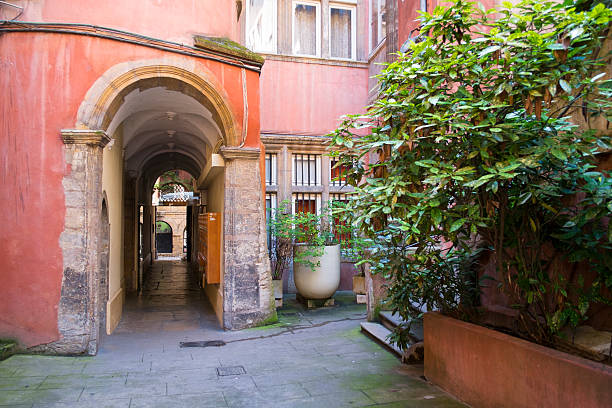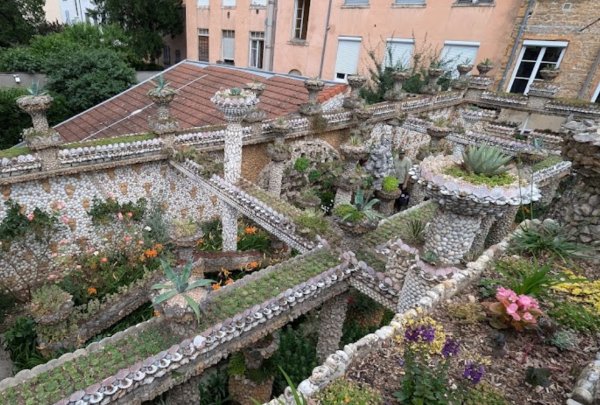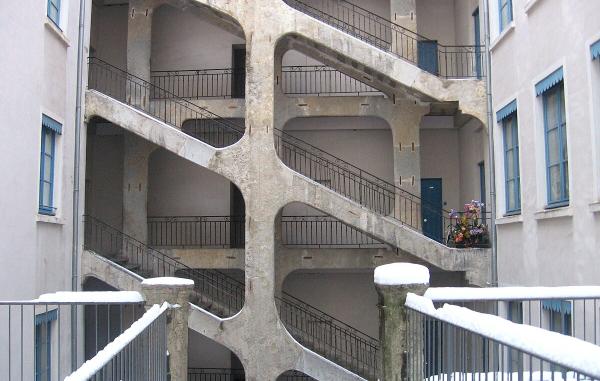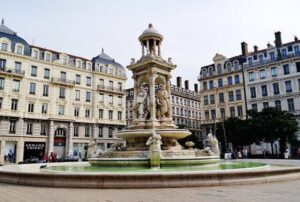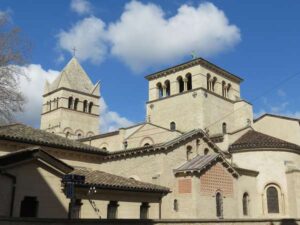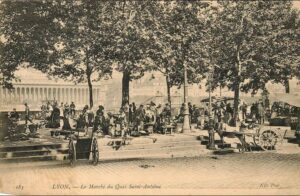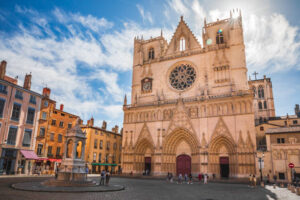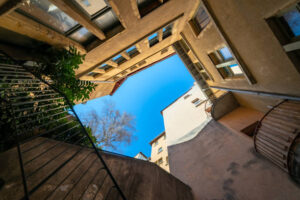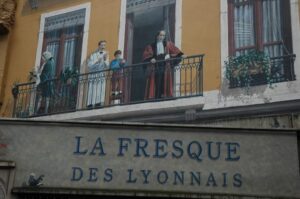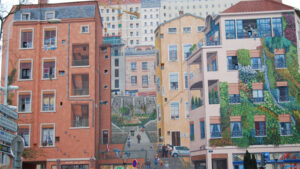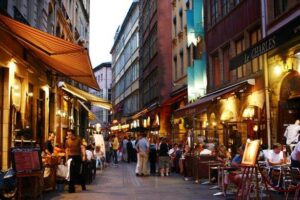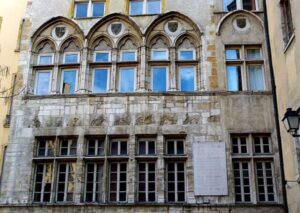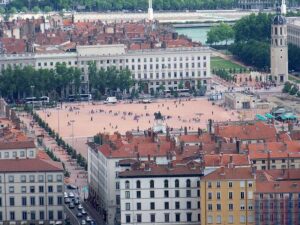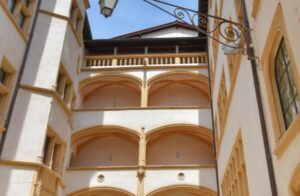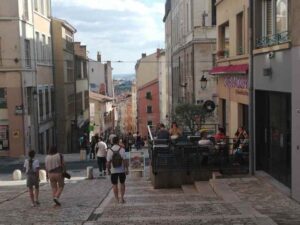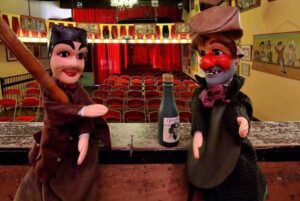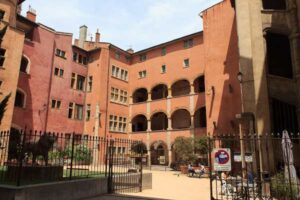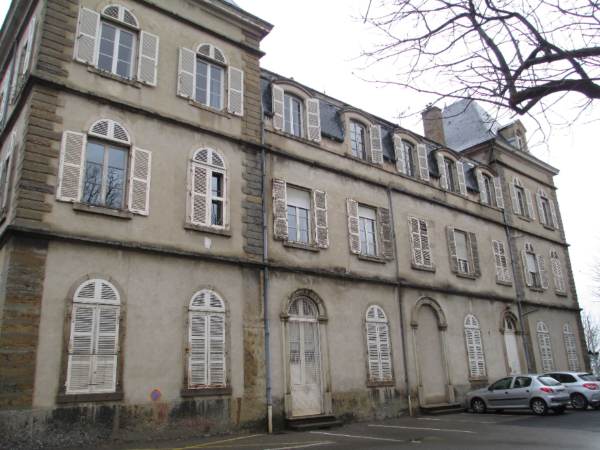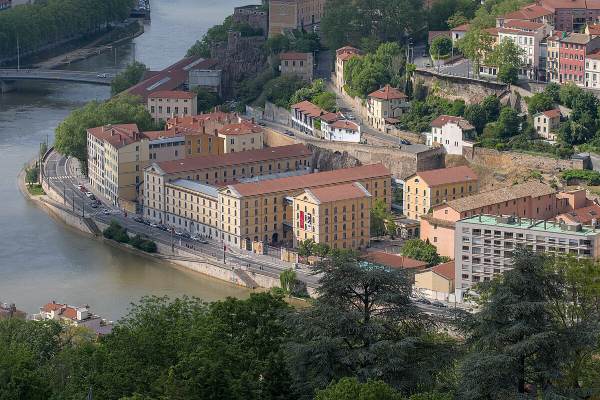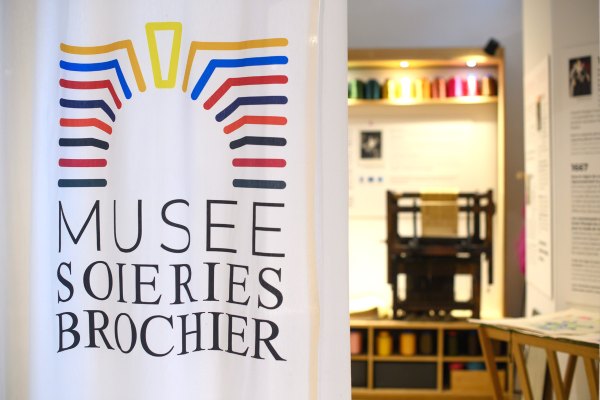Discover the secret network of traboules: Lyon reveals its historical past. Immerse yourself in the intriguing atmosphere of the cobbled streets of Vieux Lyon and Croix-Rousse and set off in search of Lyon's historic hidden passages, the famous "traboules".
These secret passages, also called traboules, are covered pathways that wind through buildings, courtyards and staircases, offering a unique way to discover the city’s hidden and colourful past. Each traboule is a unique experience, with its own particularities: pastel colours, sinuous curves, spiral staircases, vaulted ceilings or Renaissance-style arches.
Although there are an estimated 400 traboules scattered throughout Lyon, only about forty are open to the public, each clearly marked with a small, distinctive seal. The atmospheric Vieux Lyon and the artistic Croix-Rousse district are home to the majority of these secret passages.
Discovering these traboules can be a real treasure hunt, but for those in a hurry, guided tours are offered on Saturday mornings. They say that to be a true Lyonnais, you have to know your traboules. So, what are you waiting for to set off on an adventure?
A Historical Overview
The first examples of traboules are said to have been built in Lyon in the 4th century. Due to the lack of water and the malfunctioning aqueducts, the inhabitants of what was Lugdunum had to settle on the banks of the Saône, in the lower town, at the foot of the Fourvière hill. The traboules were designed to allow inhabitants to travel quickly from their homes to the river.
Later, the traboules were adopted by the silk workers canuts of the Croix-Rousse (1st and 4th arrondissements), the beating heart of the silk trade in the 19th century. The passages were used by the canut workers to transport their heavy loads from their workshops on the Croix-Rousse to the textile merchants at the foot of the hill, as well as for workers' meetings.
In Vieux Lyon (5th arrondissement), most of the streets run parallel to the river, making it difficult to get from one street to another without having to make a huge detour. Thus, courtyards connected by a network of passages and a large number of shortcuts were created. The traboules of Vieux Lyon thus allowed workers and artisans to quickly transport clothing and other textiles across the city, while remaining sheltered from the elements.
A century later, the traboules had a completely different use. During World War II, they were used by the Resistance for secret meetings, preventing the Nazis from occupying the entire city of Lyon.
In the 1830s, Lyon had as many as 25,000 canut silk workers. As new silk workshops opened, merchants began to take advantage of the artisan weavers by reducing their wages and benefits.
Struggling against the combination of increased competition, new technologies, uncertain economic forces, and exploitation by merchants, the workers decided to rebel. Banding together, the canut silk workers closed the workshops and marched through the city, collecting weapons from the arsenal as they went, seeking to hold the industry hostage until a fixed wage could be agreed.
However, the revolts of the silk workers (Canuts) were violently suppressed. 10,000 Canuts were reportedly tried in Paris and subjected to penal deportation, but their motto "live free by working or die fighting" inspired other workers' uprisings in the following years. One of the landmarks of the canuts' revolts is in the Croix-Rousse district. It is the "Traboule de la cour des Voraces", also the oldest reinforced concrete staircase in Lyon.
Visits to the traboules
Guided tours are organized to explore these mysterious passages. These tours allow you to discover emblematic traboules such as the one connecting rue Saint-Jean to rue du Bœuf, or the one starting at Place Colbert and offering a historic exterior staircase over six floors.
The longest traboule
The longest traboule in Lyon connects 54 rue Saint-Jean to 27 rue du Bœuf, and a picturesque and famous traboule begins at 9 Place Colbert/14 bis montée Saint Sébastien, with a historic six-story external staircase.
If you are a bit adventurous, here are some traboules to discover for yourself:
- 27 Rue St Jean connecting to 6 Rue des Trois Maries
- 54 Rue St Jean with 27 Rue de Boeuf
- 31 Rue du Boeuf with 14 Rue de la Bombarde
- 2 Place du Gouvernement with 10 Quai Romain Rolland
- 9 Rue des Trois Maries with 17 Quai Romain Rolland
In short, Lyon is full of these historical gems that tell part of its fascinating past. A dive into this secret network of traboules is a journey through time in the heart of the city.

